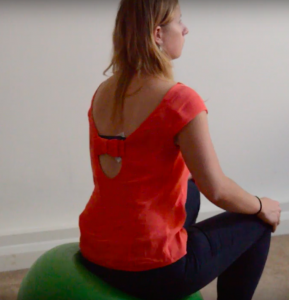Start these exercises by gently working on your abdomen and breathing:
#1 Fast contractions, Lying on your back
(to take weight off the muscles)
- Keep your spine neutral (neither arched or flattened)
- Keep your shoulders relaxed
- Start by establishing low slow breathing
- While breathing out, squeeze your pelvic floor:
- 10* as if you are stopping the flow of urine
- 10* as if you are holding in wind
- 10* as if you are closing your pelvic floor
- Keep breathing as you hold the contraction for 2 seconds
- Put your fingers on the pubic hair line and you may feel your lower abdomen gently tension, drawing away from your fingers.
- But do not tense your tummy and do not push it out

#2 Long contractions, Lying position,
the same exercise but hold the contraction for 5 to 10 seconds while continuing to breathe.
- 10* as if you are stopping the flow of urine
- 10* as if you are holding in wind
- 10* as if you are closing your pelvic floor
#3 Sit tall and upright away from the back of your chair
with your legs slightly apart and maintaining your lumbar curve.
Feel your perineum resting on the seat. Try to draw in and lift your pelvic floor up off the firm seat. Hold the contraction for 5 to 10 seconds and as you continue to breathe normally. Repeat 10*
#4 Standing up ,
have your legs apart and toes turned in and then try a pelvic floor contraction.
Hold the contraction for 5 to 10 while breathing normally. Repeat 10*Finish with abdominal relaxation:
The do’s and don’ts of pelvic floor muscle training
- Do not use you inner thigh muscles
- Do not clench your buttocks
- Do not squeeze your abdominal muscles (do not push your tummy out)
- Yes you tummy will draw in (gently)
- Do not hold your breath
- Do not bear down

How many times a day
Twice a day, don’t do contractions all day long. You need to release your pelvic floor. It’s a lazy muscle: if you squeeze it too much, you won’t be able to squeeze it when you will really need it.
You can come and consult us at Pimlico, in Camden Town or schedule an online consultation.




2 Responses
Is a nice exercise